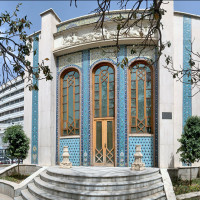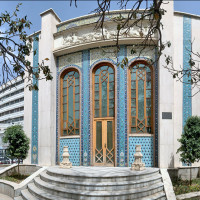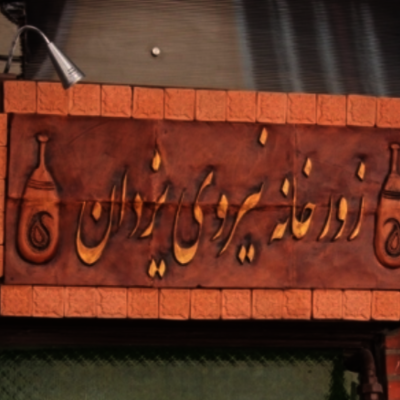A long time ago, a zourkhaneh was a place for the traditional system of Iranian athletics. Doing exercises and practicing one on one wrestling that was done only by men. During the first Pahlavi era practicing became mandatory in the schools in 1306 SH, and later the National Association for Sports was founded in 1313, following which the idiom Varzesh-e Bastani or ancient sports became common. Varzesh-e Bastani is practiced in a small and roofed space called zourkhaneh. It has a dome as the roof and a small entrance door. All the zourkhanehs have the same architectural design. The wrestling arena is located in the middle of the hall and has a lower level than the rest. There are steps all around the arena that are used as seats for the viewers. Sardam is a culprit where the Morshed sits and signs martial songs.
Before the modern gyms became popular, there was a zourkhaneh in each district. They were a place where heroic rituals met traditional relations. These rituals were registered as one of Iran’s Intangible Cultural Heritage by the UNESCO on 16 November 2010.
In 1258 SH, about one hundred and forty years ago, Haj Amin Dar-ol Zarb, who was one of the greatest merchants of Iran, began the construction of Bank Melli or the National Bank of Iran. Today this site is a valuable treasury and includes an old building, a museum, a zourkhaneh, and Bank Melli Water Tower, and is open to the public.
Bank Melii Zourkhaneh is located on the official site of the bank in Ferdowsi Street. It was built in 1325 SH and opened two years later. Mohsen Foroughi was the architect of this building. It had a dome in the past and today no part of it remains. The portal of this building has a stone relief on which three stories of Shahnameh have been depicted by Abolhassan Sadighi. The internal spaces of the zourkhaneh are decorated with paintings by Fathollah Ebadi.
The museum cannot be visited openly, and you will need a license to visit it or do the necessary arrangements before going there.
In addition to the museum, there is a water tower in Ferdowsi Street. Since it is close to the bank, it is also known as Bank Tower. The German architect Kurt Lindenblatt, who was the first manager of the bank, built the tower along with a group of German agents. This tower was designed to irrigate the plants and transfer water to the upper levels of the building. It was built in 1315 SH as determined on the tilework of the eastern side. The beautiful cuerda seca tiles of this building are works by the famous Khaknegar Moghaddam family who still are in the business of making tiles. Bank Melli Water Tower was registered as a national heritage of Iran in 11 Mordad 1376 SH.



